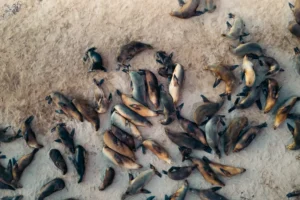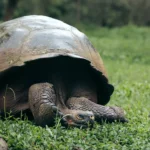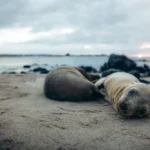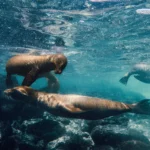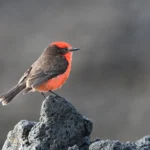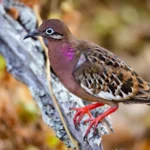Few people are lucky enough to see a volcano erupt. For the second time within two years, Dr. Jorge Carrion, Director of Conservation for Galapagos Conservancy has witnessed first-hand the fury and majesty of vulcanism in these remote Galapagos Islands.
Conserving endangered wildlife among volcanic eruptions
Jorge led a conservation mission on Wolf Volcano in January 2022 on Isabela Island. The goal was to protect and study the endemic pink iguana that lives on Isabela Island. Jorge, along with other conservation officers and park rangers of the Galapagos National Park Directorate were searching for iguanas at the edge of the crater when the volcano erupted. The team was fortunate to be located on the other side of the crater from where the eruption took place. They were able to quickly evacuate thanks to the logistic support provided by the National Park, as well as the cooperation of the yacht, “Octopus.”
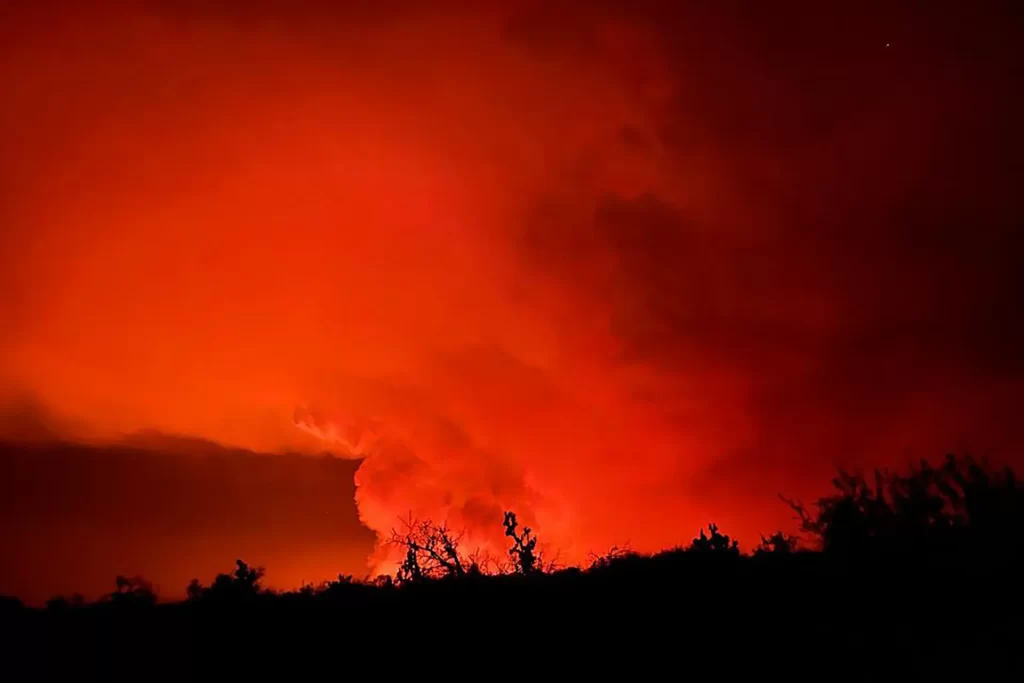
©Galápagos Conservancy
On March 3, two years later, Jorge, who was on a conservation mission at Wolf Volcano during that time, witnessed another natural phenomenon: the eruption on Fernandina island, the youngest of the archipelago, La Cumbre Volcano. Jorge was able to watch the neighboring island come alive with explosions and columns of gas, ash, and other materials.

©Galápagos Conservancy
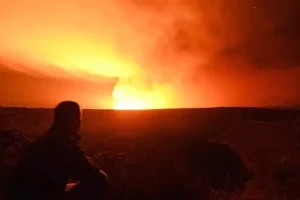
©Galápagos Conservancy
These experiences were more than just observing nature. These experiences serve as powerful reminders about the importance of conservation, especially in a fragile and dynamic environment like Galapagos. Jorge is the leader of the conservation team and he embodies all the passion and dedication needed to protect the unique ecosystems found in the dynamic and fragile Galapagos environment.
Conservation of life at the Edge: The Role of Scientific Research and Environmental Education
While the current eruption of La Cumbre Volcano does not pose a major immediate threat to any Galapagos Wildlife, it serves as a reminder of the constant volcano activity that has shaped this islands over millions and years, still can sometimes threaten species.
Our staff, such as Jorge, have the opportunity to learn about geological processes in these volcanic environments and their impacts on the environment. They can also educate the public regarding the importance of risk management and conservation for the fragile biodiversity of Galapagos.
We are proud of our leaders at Galapagos Conservation, like Jorge Carrion. His passion and dedication in helping to save the archipelago’s incredible biodiversity has also allowed him to witness first-hand the powerful and vast forces of vulcanism, which shape the fate of so many species on these islands.
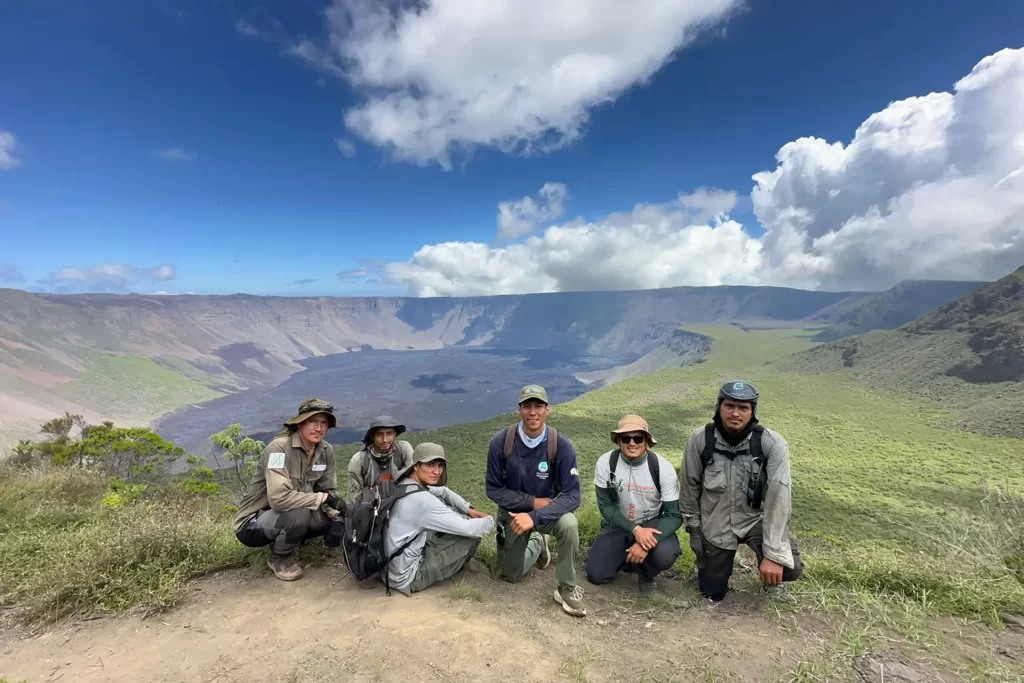
©Galápagos Conservancy
Every year on March 3, World Wildlife Day celebrates the importance of wildlife around the world. As a leader of conservation efforts in Galapagos, our organization is a key player. We work closely together with the Galapagos Park Directorate, as well as other partners, to contribute directly to the recovery and restoration of endangered species.
Protecting Galapagos’ Unique Biodiversity
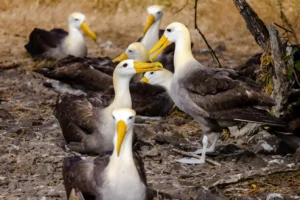
©Galápagos Conservancy
Due to its geographic isolation, volcanic origin and marine currents, the Galapagos Archipelago has a wide range of endemic animals. Unfortunately, climate change and human activity have led to damage of several Galapagos eco-systems, leading to the extinctions of some species. Galapagos Conservancy has committed itself to reviving ecologically important species that are at risk of extinction, and restoring the habitats they inhabit.
Over 2,000 species are endemic to the archipelago, which is unique on Earth. It also has some of the highest endemism levels among oceanic archipelagos.
We are committed to protecting the Galapagos Islands’ unique species through our program ‘Iniciativa Galapagos,’ in collaboration with the Galapagos National Park Directorate. We are both actively involved in conservation projects under the program. These include protecting all species of giant turtles, land iguanas and Waved Albatrosses.
Galapagos: Challenges and commitments
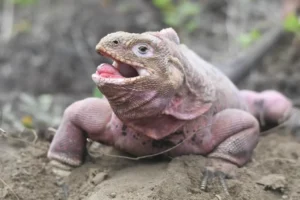
©Galápagos Conservancy
Washington Tapia has highlighted the progress in wildlife conservation, and the unique Galapagos ecosystems, highlighting the importance of flora, fauna, and ecosystems. These emblematic species are essential to the Galapagos eco-systems’ dynamics and the ability of humans to benefit from them. He noted that biodiversity conservation and ecosystem recovery are essential for human well-being.
This World Wildlife Day we celebrate the fragile and rich biodiversity of our planet and its ecosystems. This day is a reminder that all living things are interconnected and we share the responsibility of ensuring the sustainability of the natural environment.
We also contribute to protecting wildlife worldwide by conserving marine migratory bird species who visit the archipelago all year round. Join us on our mission to protect, restore, and conserve Galapagos.
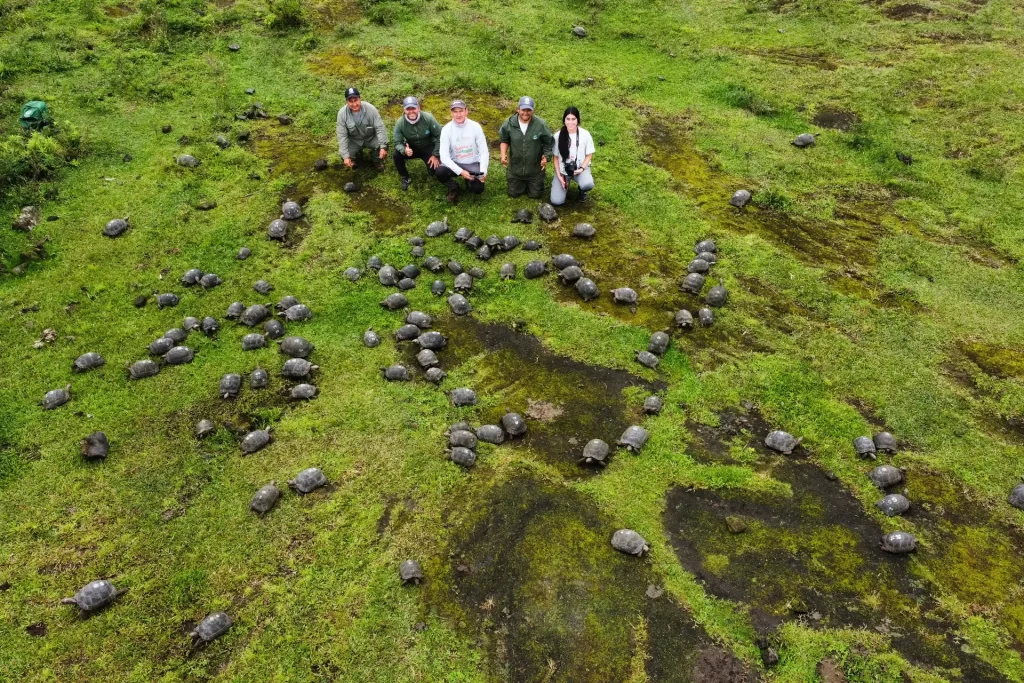
©Galápagos Conservancy
COVID-19 taught us many lessons. One of them was the importance to be self-sufficient. Noemi, an entrepreneur and a good example of this, shows us how local farming in Galapagos improves people’s lives and contributes to environmental conservation.
Role of local agriculture during pandemic
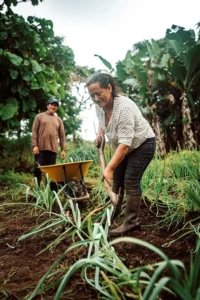
©Galápagos Conservancy
Families like Noemi’s have turned to agriculture as a way to strengthen their resilience. Isabela, where Noemi lives, is far from urban amenities, and presents several challenges for livelihood. Noemi’s family has found strength in cultivating the land.
Noemi, who is part of our Conservation Action Grants Program, cultivates carrots, cilantro and tomatoes as well as onions, peppers and peppers. These crops are distributed to local shops, which promotes the consumption of fresh produce that is free of chemicals, safeguarding the health and safety of Isabela residents.
Noemi is convinced that Galapagos’ environment can be preserved by local agriculture. She believes that the importation of products from the mainland could introduce pests and disease that are harmful to the unique flora, fauna and ecosystems in the Galapagos. Noemi stressed that it was important to grow food locally in order to reduce the risk of these pests and disease.
Supporting Local Sustainability
We are proud of our support for initiatives like Noemi’s project which helps to revitalize the local economy in Galapagos and empower rural communities. We also support local agricultural activities to ensure a stable food supply in the province and create employment opportunities.
Noemi’s project is a great example of how collaboration and dedication can have a significant impact on the conservation of an invaluable natural treasure. Galapagos supporters have generously donated to our cause, and we are grateful for their support. This will ensure the protection of the unique ecosystem of Galapagos, as well as a prosperous future both for the islanders and the Galapagos.

©Galápagos Conservancy
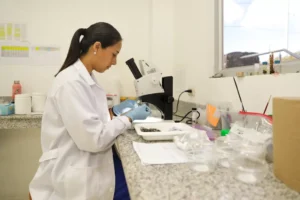
©Galápagos Conservancy
Washington Tapia, our General Director and Jean Pierre Cadena of the Galapagos Biosecurity and Quarantine Agency were present at the signing ceremony. Also in attendance was Sade Fritschi from Ecuador’s Ministry of Environment. Tapia said that “Galapagos Conservancy will play a vital role in fostering innovative studies. We are confident that information collected, including the genome description of giant turtles and other iconic species, is going to be instrumental in optimal management and conservation for the archipelago’s emblematic species”.
This agreement promises several important benefits:
- Precise Species Identification: The Molecular Analysis of Genetic Samples that can be exported now under this agreement, will allow the accurate identification and conservation of many species.
- Optimised breeding programs: Captive rearing programmes can be improved significantly by identifying the best breeding groups.
- Early diagnosis: Identification of high-risk diseases that affect endemic wildlife will allow for timely, effective response measures.
It will be crucial to make informed decisions regarding resource management and conservation for Galapagos that we can now analyze genetic samples taken from Galapagos using modern molecular-genetic technologies.
This initiative allows for a joint effort between Ecuadorian authorities and Galapagos Conservancy to conserve endemic Galapagos species.

©Galápagos Conservancy
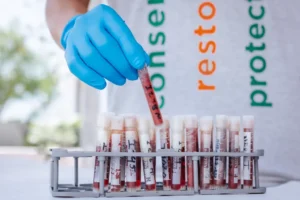
©Galápagos Conservancy
Imagine a world devoid of the playful barks, sleek forms and graceful movements of the Galapagos Sea Lions. These charismatic and endemic creatures are important predators in marine ecosystems. These sentinels protect the balance and health of marine life. Their survival is at risk, as they face many challenges including climate change. We can protect these sea guardians and ensure that Galapagos Sea Lions thrive, as well as marine biodiversity for future generations.
Education and environmental awareness: Empowering young minds
Marjorie Riofrio is a researcher and professor from the Universidad San Francisco de Quito. She has spearheaded an initiative to engage young minds in this context. This initiative is more than just a simple rescue or protection action. Marjorie involves high school students on San Cristobal Island, in hands-on learning activities. She aims to cultivate environmental stewardship and build their capacity.
Collaboration for Impact
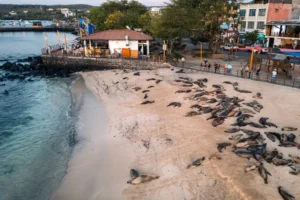
©Galápagos Conservancy
This initiative was implemented in June 2022 with the support of the Galapagos Science Center, and a conservation grant provided by the Galapagos Conservancy. The project involved 42 high school students aged 14-17 from different institutions. They attended monthly training sessions. The sessions included forums, workshops and field trips to help the students better understand these Galapagos species.
Making a difference in the community
They also monitor sea lion colonies in populated areas. They can then apply the knowledge they have acquired and develop critical thinking and problem solving skills.
The results are clear: San Cristobal’s environmental awareness has increased significantly. This project has helped to increase awareness of the importance of protecting marine-coastal habitats and sea lions. Our work is not yet done. We can reach out to more communities with your help, and inspire future generations to conserve our planet.
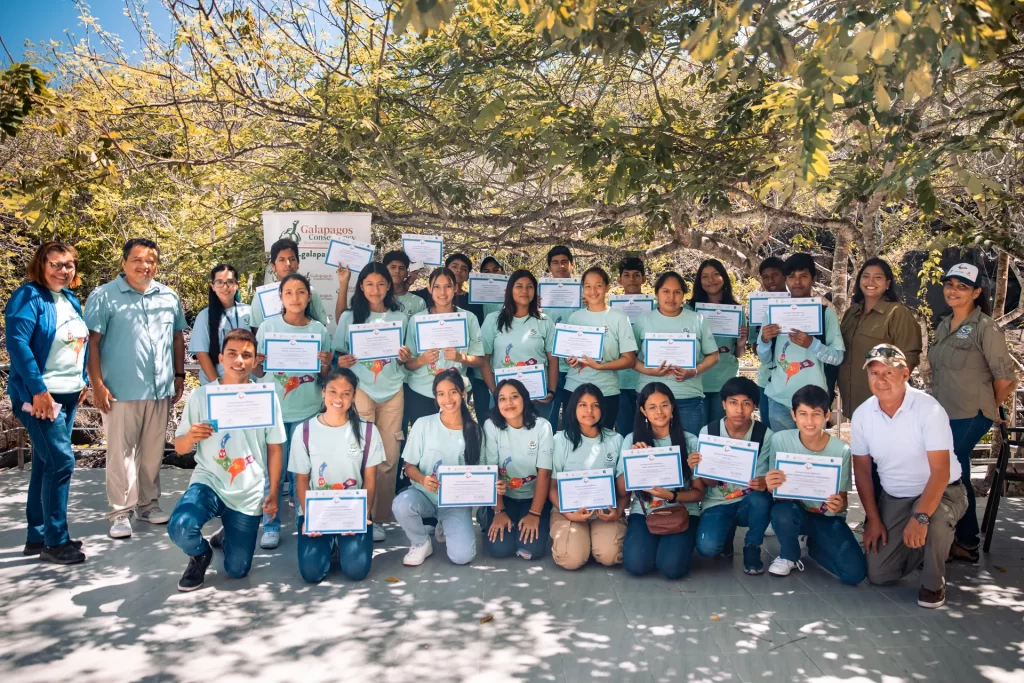
©Galápagos Conservancy
